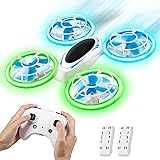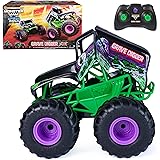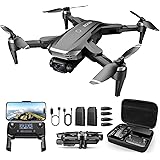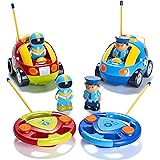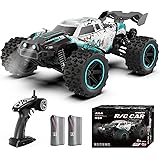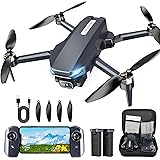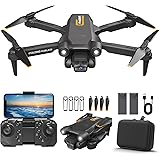Imagine the graceful flight of a bird, capable of hovering silently one moment and then soaring forward at incredible speed the next. This dream of versatile, agile flight is increasingly realized in the world of unmanned aerial vehicles, particularly with the advent of advanced designs like the VTOL Tiltwing UAV. The accompanying video likely offers a glimpse into the intricate engineering behind these remarkable machines, focusing on how they manage their orientation and movement through the sky.
Mastering the flight of such an aircraft is an immense challenge for engineers and developers alike. It requires a sophisticated understanding of aerodynamics, control theory, and real-time systems. This article delves deeper into the critical aspects of attitude and cruise control for VTOL Tiltwing UAVs, expanding on the complexities hinted at in the video’s title and providing a comprehensive overview for enthusiasts and professionals alike.
Understanding VTOL Tiltwing UAVs: Engineering Marvels
VTOL Tiltwing UAVs represent a fascinating evolution in aerospace design, blending the capabilities of helicopters with those of fixed-wing aircraft. VTOL, standing for Vertical Take-Off and Landing, means these drones do not require a runway. Furthermore, the “tiltwing” aspect refers to their ability to rotate their entire wing assembly, along with the attached propellers or rotors, to direct thrust.
This unique mechanical design enables them to transition seamlessly between different flight modes. They can ascend and descend vertically like a multirotor drone, then pivot their wings to fly horizontally like a traditional airplane. The advantages of this configuration are significant, including operational flexibility in constrained environments and enhanced speed and range during forward flight compared to pure multirotors. However, this flexibility also introduces considerable control challenges, making their precise operation a testament to modern engineering.
Mastering Attitude Control in Complex Airframes
Attitude control is the bedrock of stable flight for any aircraft, dictating its orientation in three-dimensional space. For a VTOL Tiltwing UAV, this becomes an even more intricate dance, especially during its critical transition phases. Fundamentally, attitude refers to the aircraft’s pitch (nose up or down), roll (wing rotation), and yaw (nose left or right).
Maintaining a desired attitude is like balancing a plate on a finger; even a slight deviation requires an immediate, calculated correction. On these advanced UAVs, a sophisticated Flight Control System (FCS) continuously monitors the aircraft’s orientation using sensors such as Inertial Measurement Units (IMUs). These IMUs typically contain gyroscopes to detect angular rates and accelerometers to sense linear acceleration and gravitational pull. The FCS processes this sensor data, compares it to the pilot’s commands or autonomous flight plan, and then issues commands to the control surfaces or thrust vectoring systems to make necessary adjustments. For instance, in hover mode, differential thrust from the rotors manages pitch, roll, and yaw, while in forward flight, elevons and rudders become the primary means of control.
The Precision of Cruise Control for Efficient Flight
Once a VTOL Tiltwing UAV completes its vertical take-off and complex transition, it shifts into horizontal cruise mode, where efficiency and endurance become paramount. Cruise control in this context involves maintaining a steady airspeed, altitude, and heading, much like a car on a highway. This is where the tiltwing design truly shines, allowing the UAV to leverage aerodynamic lift efficiently.
During cruise, the wings are fully tilted forward, functioning as traditional aircraft wings. Thrust is primarily provided by the forward-facing propellers, and control surfaces like elevons (combined elevators and ailerons) manage pitch and roll. A dedicated cruise control subsystem within the FCS constantly adjusts motor thrust and control surface deflections to match the programmed flight parameters. Moreover, the FCS must account for external factors like wind gusts, which can significantly impact airspeed and trajectory, ensuring the drone maintains its intended path with minimal energy expenditure. This meticulous management is vital for extending mission duration and maximizing operational range.
Navigating the Crucial Transition Phase: A Control Ballet
The most challenging aspect of controlling a VTOL Tiltwing UAV undeniably lies within its transition phase. This is the period when the aircraft shifts from vertical lift to horizontal flight, or vice versa, and requires a meticulous orchestration of thrust and aerodynamic forces. During transition, the wing assembly slowly tilts, gradually converting vertical thrust into horizontal propulsion while simultaneously generating aerodynamic lift.
This intricate process demands that the control system continuously blends control authority from two fundamentally different flight regimes. Initially, the rotors provide all lift and control; as the wings tilt, aerodynamic surfaces become progressively more effective. The FCS must manage the changing center of lift and thrust, compensating for instabilities that arise as the aircraft operates in a flight envelope unlike either a pure helicopter or a pure airplane. This involves complex algorithms that seamlessly hand over control responsibilities between different actuators, ensuring a smooth and stable change of flight mode, akin to a perfectly choreographed aerial dance.
Overcoming Challenges in VTOL Tiltwing UAV Control
The journey to perfecting VTOL Tiltwing UAV control is fraught with unique engineering hurdles. Beyond the inherent complexity of managing multiple flight modes, environmental factors can significantly impact performance and stability. For example, strong wind gusts can instantaneously alter the aircraft’s attitude and trajectory, demanding rapid and precise counter-actions from the control system.
Also, solar radiation, or “Sonne” as mentioned by Speaker 1, can cause thermal expansion in structures or affect sensitive sensors, potentially leading to measurement inaccuracies or reduced system reliability over time. Additionally, issues like uneven weight distribution or unexpected structural shifts, possibly hinted at by “nicht g’wicht” (not weighted/balanced) from Speaker 2, can throw off the aircraft’s center of gravity, demanding an even more robust and adaptive control system. Engineers must design these systems with sufficient robustness to handle such disturbances, often incorporating advanced sensor fusion techniques and adaptive control algorithms that learn and adjust in real time. This ensures the UAV remains stable and responsive under a wide array of operational conditions, ultimately enhancing safety and mission success.


